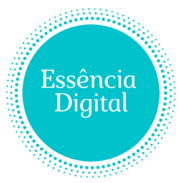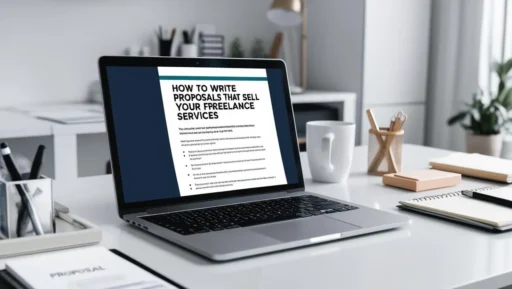The Power of the Winning Proposal
In the competitive world of freelancing, your proposal is often the single most important document you will create. It’s far more than a price quote or a formality; it is your ultimate sales tool. Imagine a potential client, overwhelmed by a flood of generic, low-effort bids. A well-crafted proposal is your opportunity to cut through that noise and make a powerful first impression. It’s your first—and sometimes only—chance to demonstrate your professionalism, your strategic thinking, and your genuine understanding of their needs.
A great proposal can often beat a great portfolio. Why? Because while a portfolio shows what you’ve done for others, a proposal shows what you can do for them. By mastering the art of writing persuasive, client-centric proposals, you will dramatically increase your win rate, command higher fees, and build the foundation for a truly successful freelance career.
Step 1: Become a Detective, Not Just a Bidder
Before you write a single word, you must understand the client’s world. The biggest mistake freelancers make is immediately talking about themselves. The best proposals start by talking about the client. Put on your detective hat and investigate.
- Deconstruct the Project Brief: Don’t just skim it. Read it carefully and identify the core challenges, stated goals, and any specific language the client uses. What are they really trying to achieve? The client isn’t just buying “a new website”; they are buying “a way to increase online sales by 20%” or “a professional online presence that builds trust with investors.”
- Go Beyond the Brief: Your research separates you from the crowd. Spend 10 minutes investigating the client’s business. Look at their current website, their social media presence, and their competitors. Look up the person who posted the project on LinkedIn. This allows you to speak their language and demonstrate genuine interest.
- Identify the Underlying “Why”: A great proposal addresses the client’s pain points. Are they struggling with low engagement? Losing traffic to a competitor? Embarrassed by their outdated branding? Your proposal should position your service as the direct solution to that specific pain.
The Anatomy of a Persuasive Freelance Proposal
A winning proposal is organized, concise, and easy for a busy client to scan. Structure your document to guide them logically from their problem to your solution.
1. The Personalized Opening
Start by addressing the client by name. The first one or two sentences should act as a hook, immediately showing you’ve done your research.
Instead of: “I am writing to apply for the graphic design position.” Try: “Hi [Client Name], I was excited to see your post for a new brand identity for [Their Company Name]. I’ve been following your work in the sustainable products space and believe a strong, modern visual identity could significantly amplify your mission.”
2. Your Understanding of the Project (The Empathy Section)
This is arguably the most critical section. Before you talk about your solution, summarize the client’s goals and challenges in your own words. This proves you were listening and builds immediate trust.
“Based on your project brief and my research, my understanding is that you’re looking to not only redesign your logo but also create a cohesive brand identity that resonates with a younger, eco-conscious audience and helps you stand out in a crowded market.”
3. Your Proposed Solution (The “How”)
Now that you’ve shown you understand their problem, outline how you will solve it. Break down your process into clear, logical steps or phases. Using bullet points here makes your approach easy to digest.
- Phase 1: Discovery & Strategy: A 60-minute call to dive deep into your brand, audience, and goals.
- Phase 2: Concept Development: I will develop three distinct brand concepts for your review.
- Phase 3: Refinement & Revisions: Based on your feedback, we will refine your chosen concept.
- Phase 4: Final Delivery: You will receive a complete brand guidelines document and all necessary logo files.
4. The Proof: Evidence of Your Expertise
Here is where you back up your claims. But don’t just dump your entire portfolio on them. Curate your evidence.
- Select one or two highly relevant case studies or portfolio pieces.
- Briefly explain the results you achieved. For example: “For a similar project with XYZ Company, the new landing page I designed increased their lead conversion rate by 35% in the first quarter.”
- Include a powerful client testimonial if you have one.
5. The Investment: Clear and Tiered Pricing
Avoid surprising the client with a single, intimidating number. Frame your fee as an “investment” and, whenever possible, offer two or three packages. This gives the client a sense of control and helps anchor your value. For example:
- Essential Package ($1,500): Logo Design + Basic Style Guide
- Professional Package ($2,500): Everything in Essential + Full Brand Guidelines + Social Media Kit
- Premium Package ($4,000): Everything in Professional + Website Landing Page Design
6. A Clear Call to Action
End your proposal by telling the client exactly what to do next. Make it easy for them to say yes.
“If you feel the Professional Package is the right fit, you can approve this proposal directly. From there, I will send over the contract and the invoice for the 50% deposit to begin Phase 1. Please let me know if you have any questions or would like to schedule a brief call to discuss.”
Address Concerns Before They Arise
Clients are inherently risk-averse. A great proposal proactively addresses their unspoken fears.
- The Fear of Missed Deadlines: Include a clear timeline with milestones.
- The Fear of Poor Quality: Your curated portfolio and testimonials address this.
- The Fear of a Difficult Process: Briefly mention your communication style. “I provide a progress update every Friday so you’re always in the loop.”
- The Fear of Endless Revisions: Clearly state how many rounds of revision are included in the investment.
Following Up Professionally
If you haven’t heard back in 3-5 business days, it’s appropriate to send a single, polite follow-up. Clients are busy, and your message may have simply been buried.
“Hi [Client Name], just wanted to follow up on the proposal I sent over on Tuesday. Please let me know if you have any questions about the proposed approach. I’m excited about the possibility of working together!”
Conclusion: Turning Proposals into Projects
Writing a winning proposal is a skill that can be learned and refined. It’s an act of empathy, strategy, and clear communication. By shifting your focus from yourself to the client, personalizing every submission, and clearly articulating your value, you will transform your proposals from simple bids into powerful tools of persuasion. You will not only win more projects but will also attract better clients who see you as a strategic partner, not just a freelancer.

